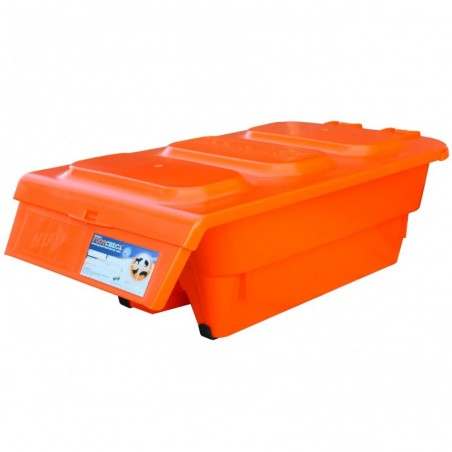According to the European Animal Disease Notification System (ADNS), together with the data published by the WOAH and the different presentations that the affected countries carry out in the European Commission Animal Health Committee, so far this year, African swine fever (ASF) has appeared for the first time in countries such as Romania and the Czech Republic, and it advances southwards in the case of Poland, and the cases in wild boars grow in Lithuania.
In the following table, we show the data from January 2017 to mid-September for different countries, according to the data from the ADNS and the WOAH*:

| Country | No. of outbreaks in domestic pigs | No. of cases in wild boars |
| Estonia | 2 | 489 |
| Latvia | 6 | 649 |
| Lithuania | 29 | 629 |
| Poland | 75 | 324 |
| Romania | 2 | 0 |
| Czech Republic | 0 | 101 |
| Moldavia | 2 | 0 |
| EU total | 114 | 2,192 |
| Ukraine | 92 | 15 |
| Russia* | 112 | 82 |
In the following chart, we can see the relative proportion of African swine fever outbreaks in the wild and domestic fauna in Northeastern Europe from January 1st, 2014 to August 27th, 2017.
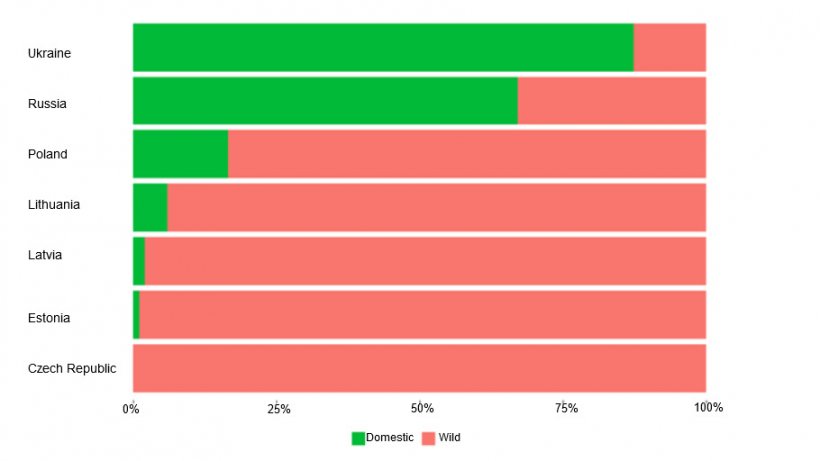
Relative proportions of African swine fever outbreaks and cases in wild boars and domestic pigs (Source: Plateforme ESA from data from the ADNS/WOAH Empres-i)
In the specific case of Poland, from the 75 domestic pig farms affected during this year, 64 are small (1-50 animals). As we can see in the map, although the outbreaks in domestic pigs (blue) and wild boars (green) are concentrated in areas near the border with Belarus, they are advancing southwards.
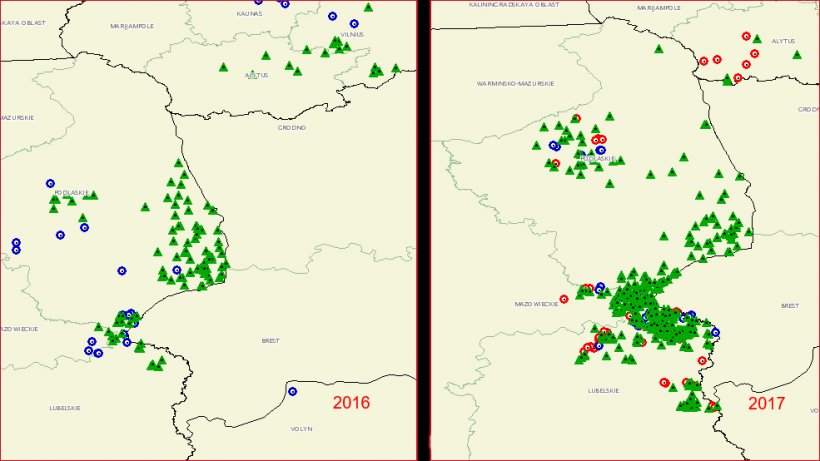
Spreading of ASF in Poland. (Source: WOAH)
On the other hand, there is a worsening of the situation in wild boars and domestic pigs, going from 30 outbreaks in wild boars and 2 outbreaks in domestic pigs in 2014 to 324 in wild boars and 75 in domestic pigs, so far this year. Part of this increase is due to an intensification of the active surveillance measures established for the wild boar population.
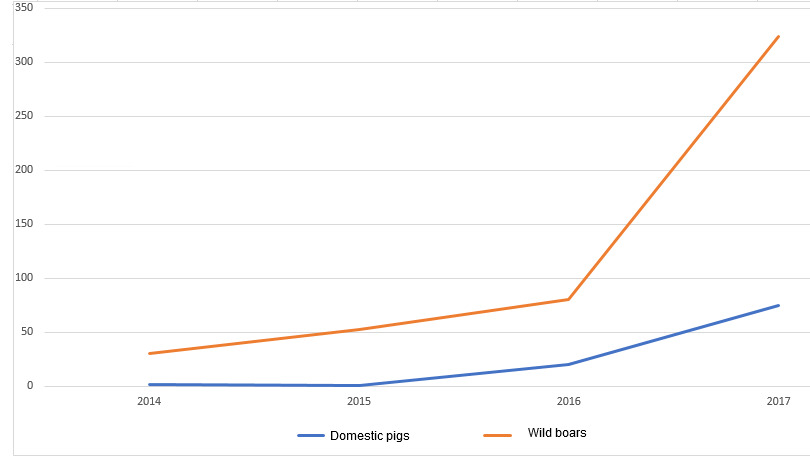
Evolution of the ASF outbreaks in domestic pigs and wild boars in Poland.
Regarding Latvia, the disease is widespread in wild boars, except in the most western area. In the case of the outbreaks in domestic pig farms, only 6 have been notified so far this year, but very dispersed in the country, and 3 of them on large farms (4,500-8,500 heads). In most of the cases, the source of infection seems to signal the contact with wild boars or the use of contaminated feed.

ASF epidemiologic situation in Latvia from January 1st, 2017 to September 17th, 2017 (Source: Food and Veterinary Service. Republic of Latvia)
In the Czech Republic there is a particular situation. After the appearance of the disease for the first time by late June 2017, 101 outbreaks have been detected, and all of them affect wild boars. They are limited to the Zlín district, in the southwest of the country.
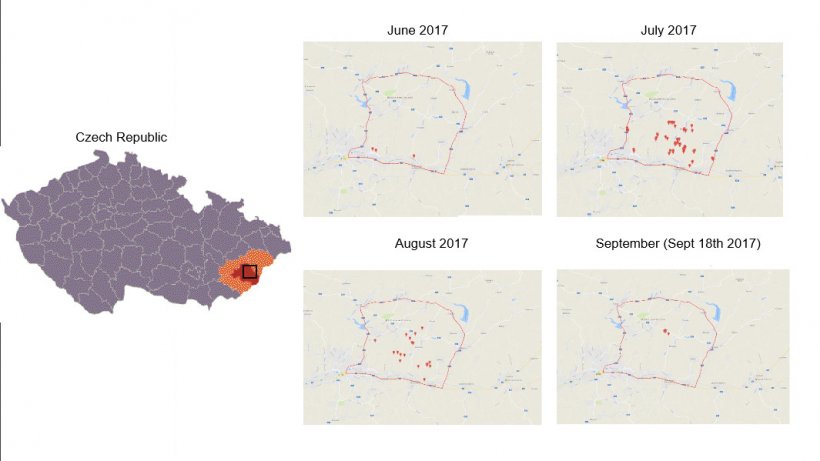
Location and evolution of the ASF outbreaks
Lithuania is, after Poland, the country in the EU that has notified more ASF outbreaks in domestic pigs so far this year, with 29 confirmed outbreaks (19 in 2016, 13 in 2015, and 6 in 2014), the last one on a farm with more than 23,000 susceptible animals. The outbreaks are located in the east half of the country.
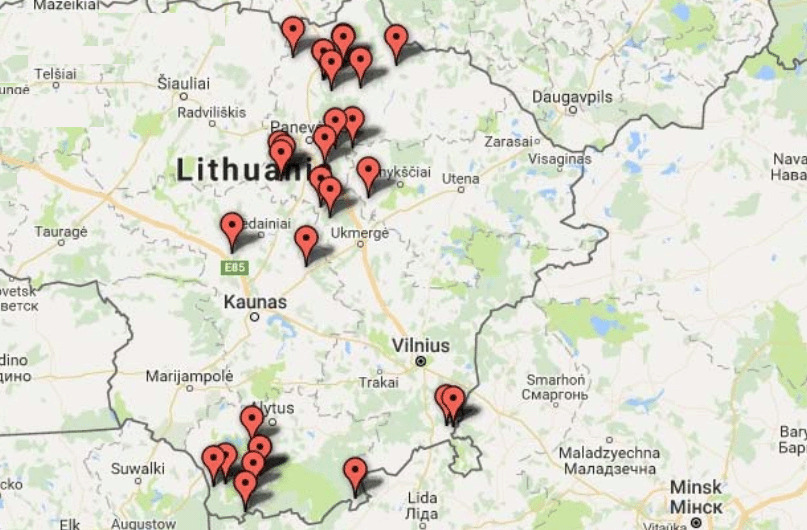
Distribution of the outbreaks in domestic pigs
Romania confirmed the disease for the first time last July, confirming an outbreak in domestic pigs in the north of the country, and a second outbreak less than 1 km away the first one by early August, both on backyard farms.
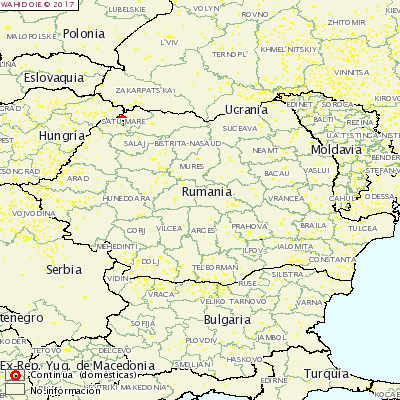
Unlike other countries, in Ukraine most of the outbreaks affect domestic pigs, very frequently backyard farms. From the total of notified outbreaks, more than half were confirmed in January and February (21 and 25 outbreaks, respectively). We must underline the region of Poltava, with 18 notified outbreaks in domestic pigs so far this year.
Russia has confirmed, up to now, 112 outbreaks in domestic pigs, mainly in family farms, but also on commercial farms. The spreading of the disease has been detected along great distances, as in the cases of the outbreaks detected in Omskaya or Irkutskaya, the later near the border with Mongolia. The epidemiologic research revealed that this outbreak was due to the consumption of frozen meat produced 4,000 km away (Malogolovkin, 2017).
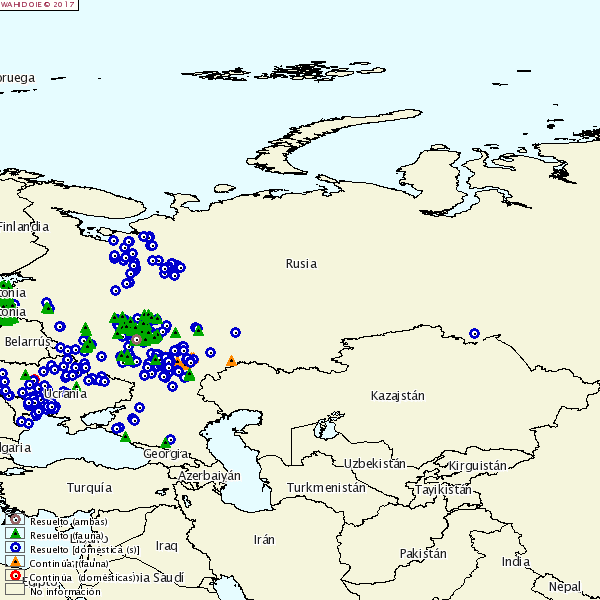
September 2017/ 333’s editorial department from data from the WOAH, the ADNS and the European Commission.




